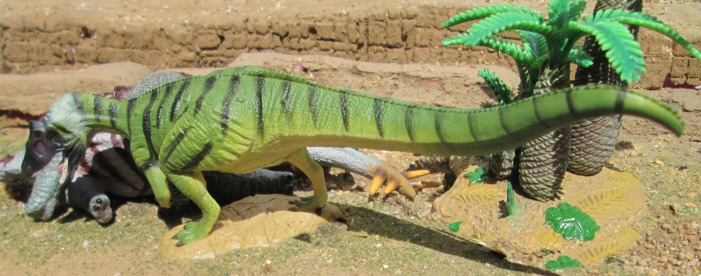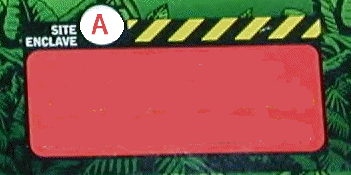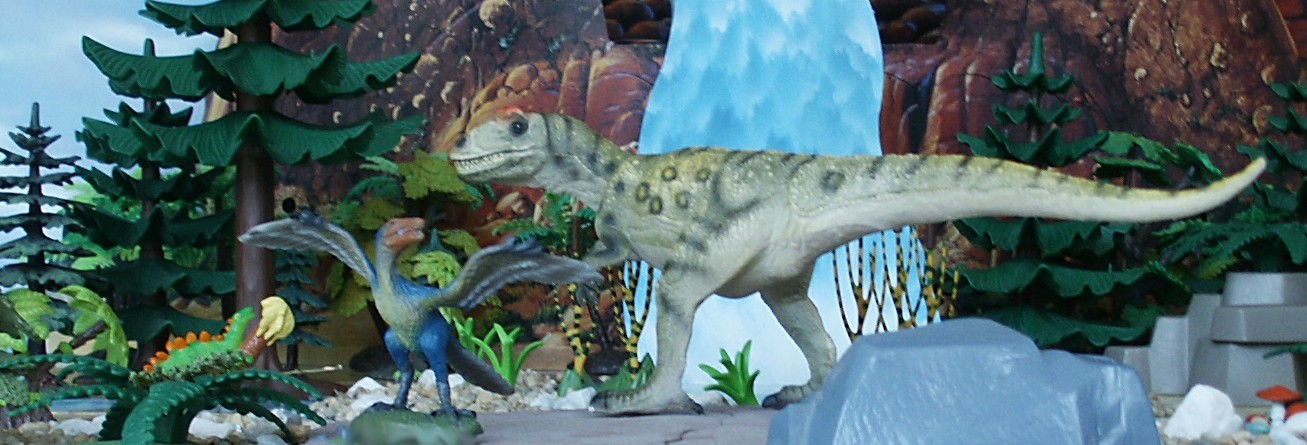LATE
JURASSIC MORRISON FORMATION THEROPODS.
updated 091114
There are at least 11 species of carniverous dinosaurs in Late Jurassic North America. This represents a much more diverse number of animals than we find in the following Cretaceous. At least half lived at the same time and their territory over lapped. Allosaurus is the dominate predator representing 75% of the fossil finds but is not the largest.
Mouse over for more info on figures.
There is trackway evidence that suggests that large theropods sometimes moved is groups of two or three. Medium and small carnivores in groups of half a dozen. Fossils of small theropods are rare but track evidence for them indicts they were present in greater numbers than the fossils might indicate. In modern ecosystems smaller predator are much more common.
It is likely that the different predators partioned resources in a way that allowed each to specialize in different types of prey or environments. The ability of theroopods to hunt and kill adult sauropods has been question because of the size difference. It is likely that the young and adolesent sauropods were are large and safe food supply.

Saurophaganax was originally described as an independent genus, but was later reclassified as a species of Allosaurus (A. maximus). The differences between it and Allosaurus are significant, it is at least 25% bigger than the largest known Allosaurus.


